ACC510 Report: Financial Statement Analysis of Provisions, Leases
VerifiedAdded on 2024/05/31
|10
|1863
|181
Report
AI Summary
This ACC510 report provides a detailed analysis of provisions, contingent liabilities, and leased items within a company's financial statements. It examines the recognition criteria and measurement issues associated with provisions and contingencies, discussing arguments for and against their inclusion in financial reports. The report also delves into leased items, covering classification, presentation requirements, and potential reclassification scenarios. Furthermore, it analyzes a selected non-current asset, detailing its valuation method and arguing for alternative valuation methods based on qualitative characteristics. References to AASB standards and other relevant sources are included to support the analysis and conclusions presented in the report.
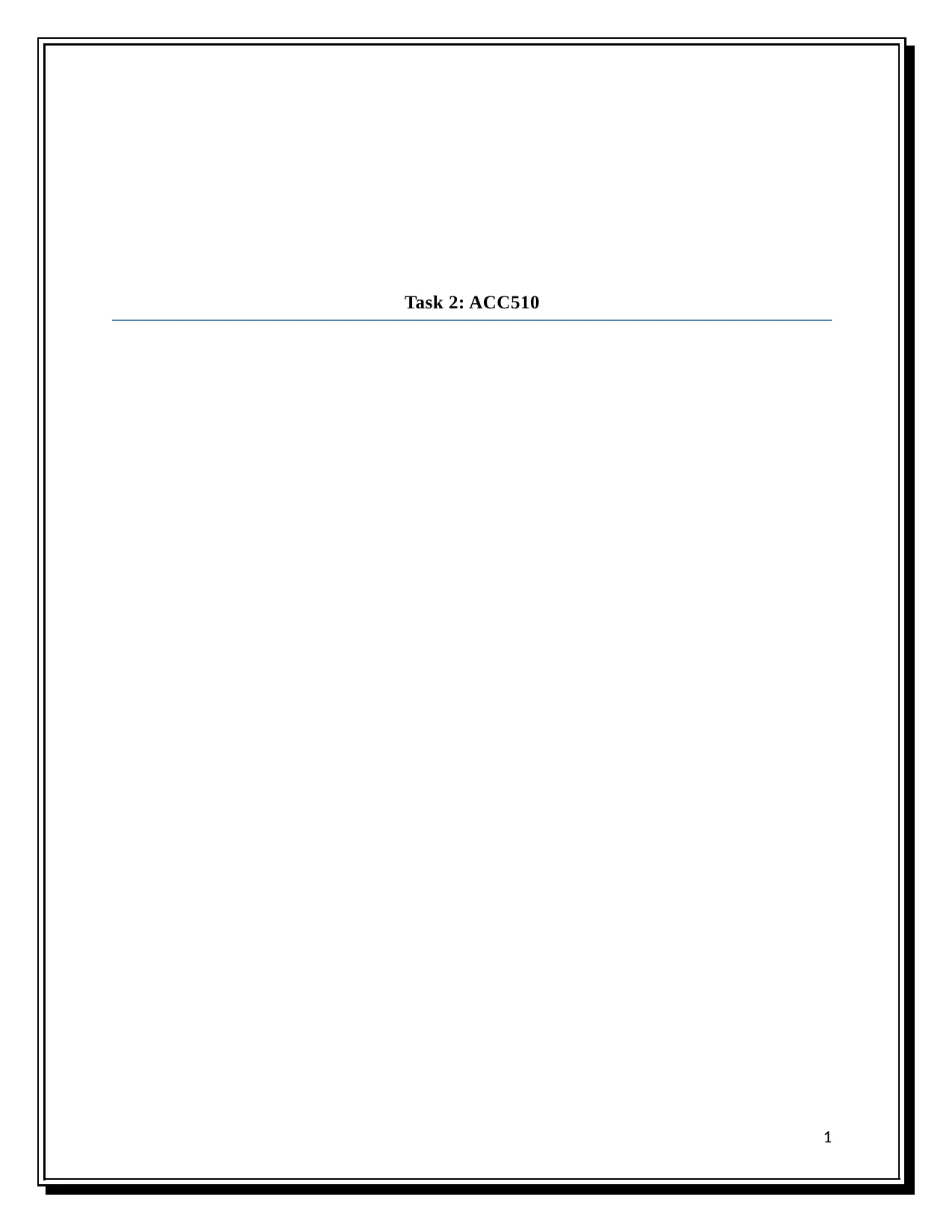
Task 2: ACC510
1
1
Paraphrase This Document
Need a fresh take? Get an instant paraphrase of this document with our AI Paraphraser
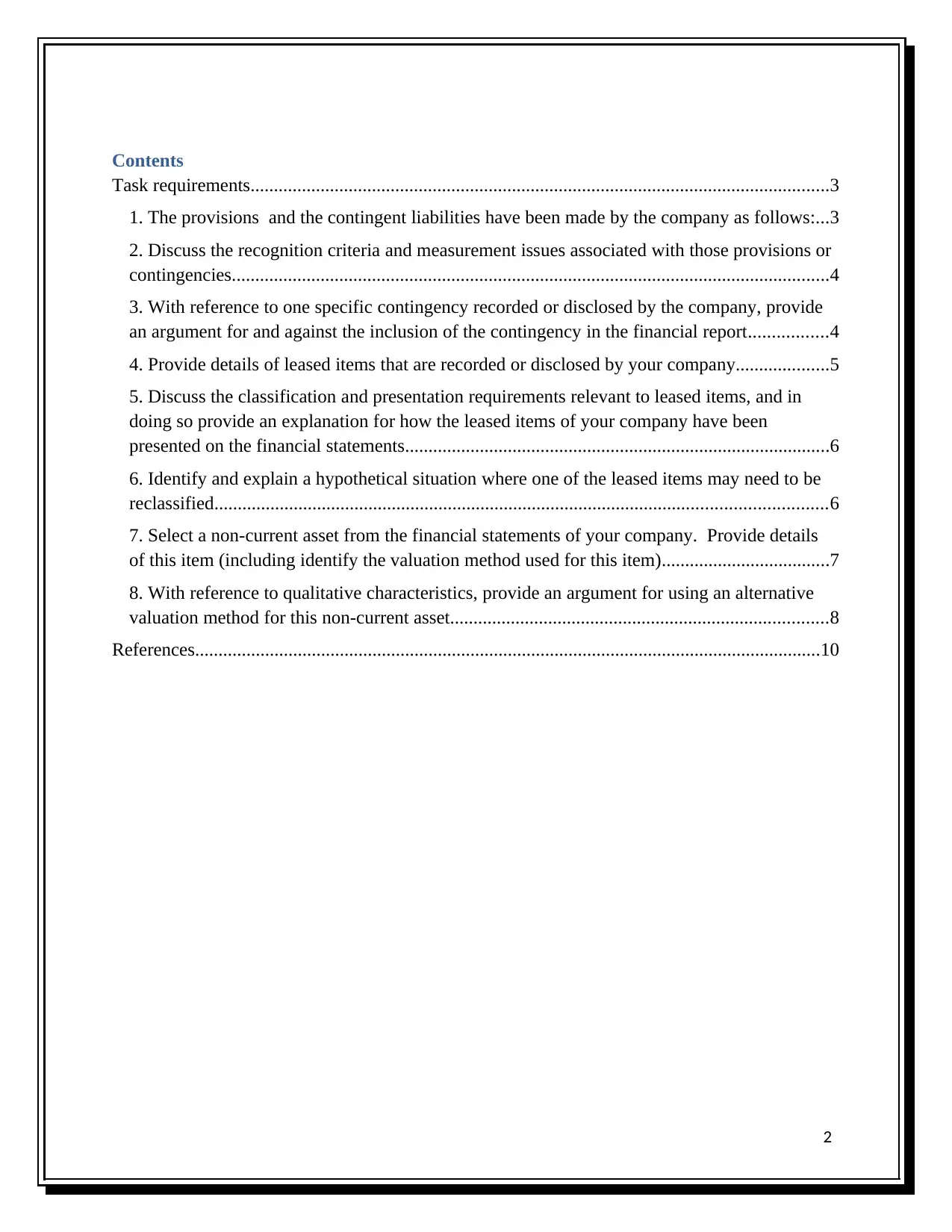
Contents
Task requirements............................................................................................................................3
1. The provisions and the contingent liabilities have been made by the company as follows:...3
2. Discuss the recognition criteria and measurement issues associated with those provisions or
contingencies................................................................................................................................4
3. With reference to one specific contingency recorded or disclosed by the company, provide
an argument for and against the inclusion of the contingency in the financial report.................4
4. Provide details of leased items that are recorded or disclosed by your company....................5
5. Discuss the classification and presentation requirements relevant to leased items, and in
doing so provide an explanation for how the leased items of your company have been
presented on the financial statements...........................................................................................6
6. Identify and explain a hypothetical situation where one of the leased items may need to be
reclassified...................................................................................................................................6
7. Select a non-current asset from the financial statements of your company. Provide details
of this item (including identify the valuation method used for this item)....................................7
8. With reference to qualitative characteristics, provide an argument for using an alternative
valuation method for this non-current asset.................................................................................8
References......................................................................................................................................10
2
Task requirements............................................................................................................................3
1. The provisions and the contingent liabilities have been made by the company as follows:...3
2. Discuss the recognition criteria and measurement issues associated with those provisions or
contingencies................................................................................................................................4
3. With reference to one specific contingency recorded or disclosed by the company, provide
an argument for and against the inclusion of the contingency in the financial report.................4
4. Provide details of leased items that are recorded or disclosed by your company....................5
5. Discuss the classification and presentation requirements relevant to leased items, and in
doing so provide an explanation for how the leased items of your company have been
presented on the financial statements...........................................................................................6
6. Identify and explain a hypothetical situation where one of the leased items may need to be
reclassified...................................................................................................................................6
7. Select a non-current asset from the financial statements of your company. Provide details
of this item (including identify the valuation method used for this item)....................................7
8. With reference to qualitative characteristics, provide an argument for using an alternative
valuation method for this non-current asset.................................................................................8
References......................................................................................................................................10
2
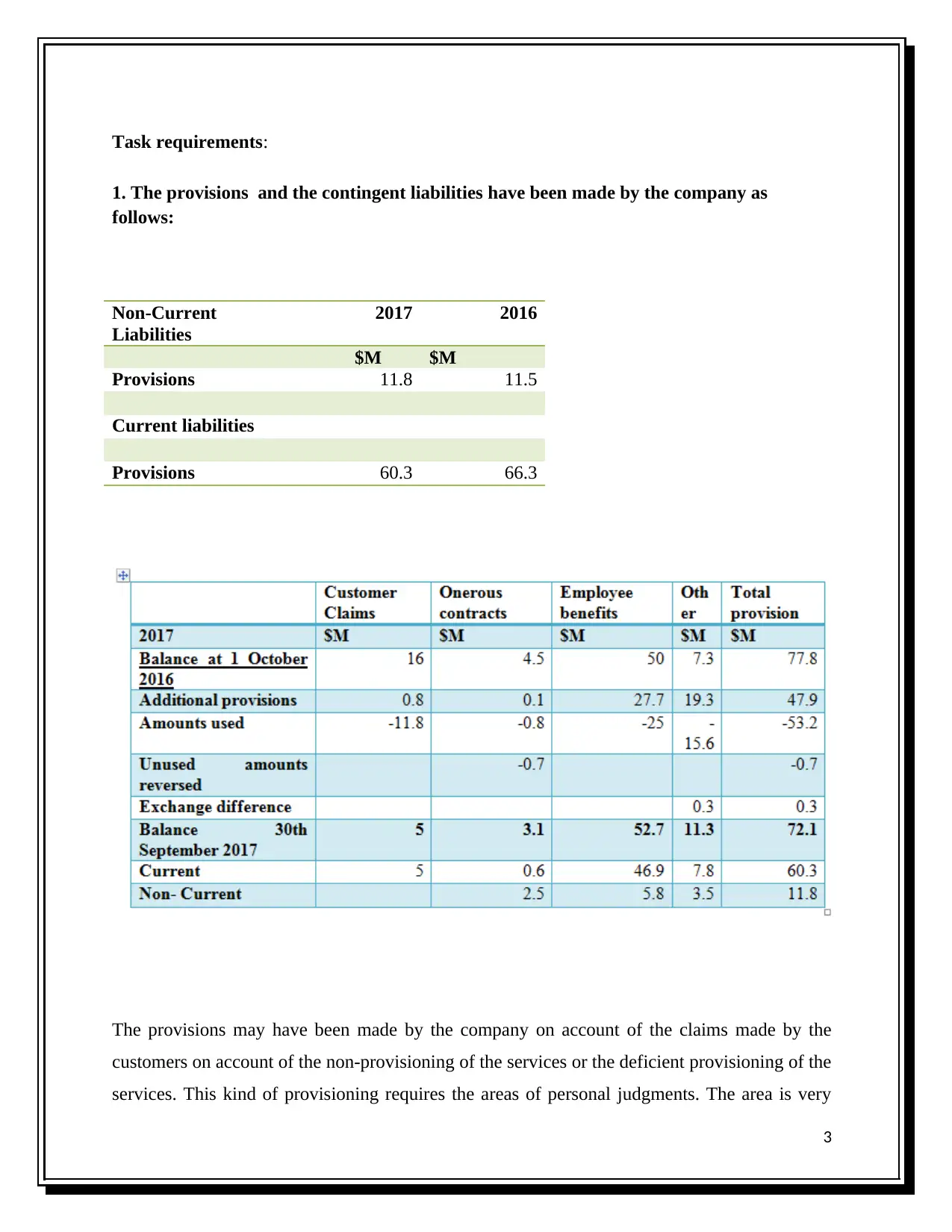
Task requirements:
1. The provisions and the contingent liabilities have been made by the company as
follows:
Non-Current
Liabilities
2017 2016
$M $M
Provisions 11.8 11.5
Current liabilities
Provisions 60.3 66.3
The provisions may have been made by the company on account of the claims made by the
customers on account of the non-provisioning of the services or the deficient provisioning of the
services. This kind of provisioning requires the areas of personal judgments. The area is very
3
1. The provisions and the contingent liabilities have been made by the company as
follows:
Non-Current
Liabilities
2017 2016
$M $M
Provisions 11.8 11.5
Current liabilities
Provisions 60.3 66.3
The provisions may have been made by the company on account of the claims made by the
customers on account of the non-provisioning of the services or the deficient provisioning of the
services. This kind of provisioning requires the areas of personal judgments. The area is very
3
⊘ This is a preview!⊘
Do you want full access?
Subscribe today to unlock all pages.

Trusted by 1+ million students worldwide
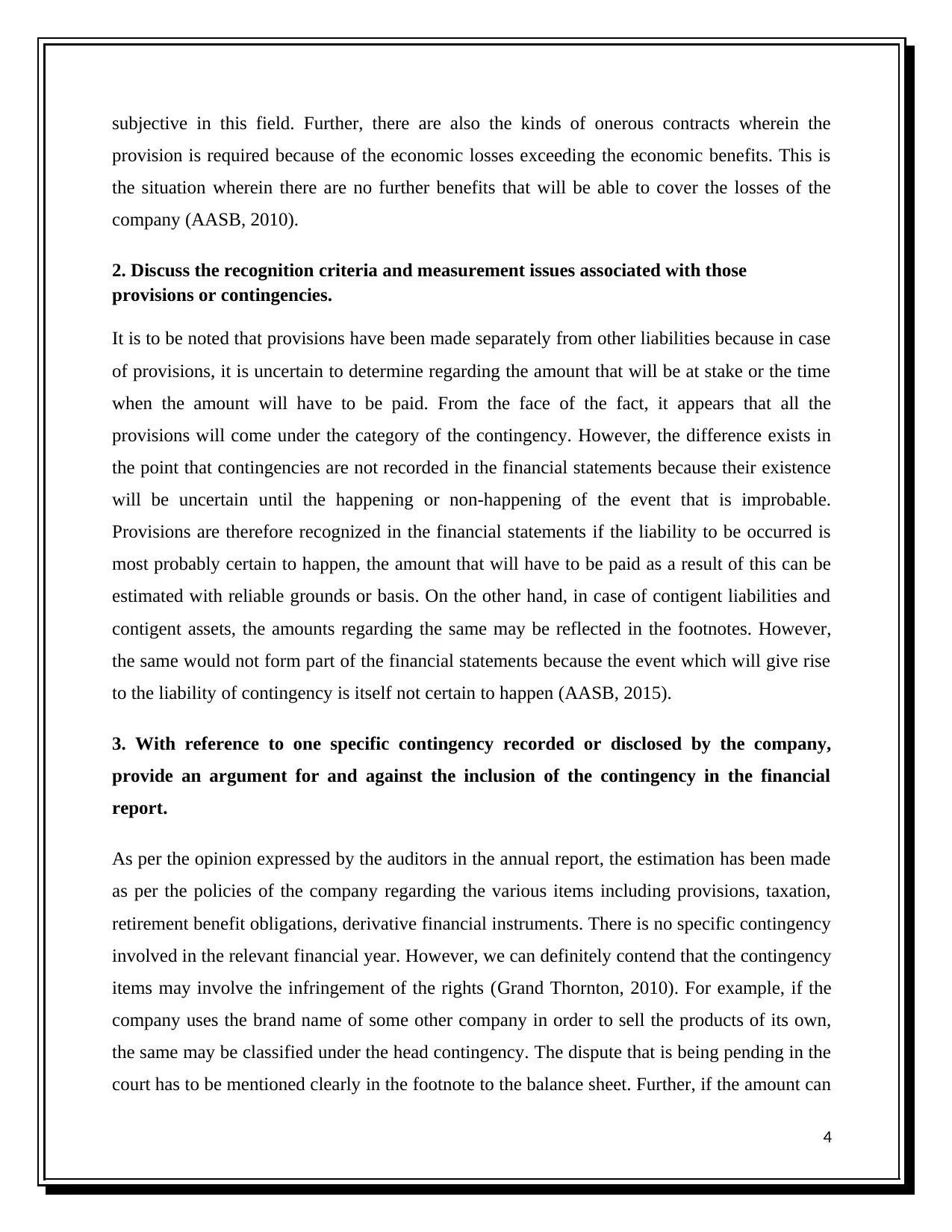
subjective in this field. Further, there are also the kinds of onerous contracts wherein the
provision is required because of the economic losses exceeding the economic benefits. This is
the situation wherein there are no further benefits that will be able to cover the losses of the
company (AASB, 2010).
2. Discuss the recognition criteria and measurement issues associated with those
provisions or contingencies.
It is to be noted that provisions have been made separately from other liabilities because in case
of provisions, it is uncertain to determine regarding the amount that will be at stake or the time
when the amount will have to be paid. From the face of the fact, it appears that all the
provisions will come under the category of the contingency. However, the difference exists in
the point that contingencies are not recorded in the financial statements because their existence
will be uncertain until the happening or non-happening of the event that is improbable.
Provisions are therefore recognized in the financial statements if the liability to be occurred is
most probably certain to happen, the amount that will have to be paid as a result of this can be
estimated with reliable grounds or basis. On the other hand, in case of contigent liabilities and
contigent assets, the amounts regarding the same may be reflected in the footnotes. However,
the same would not form part of the financial statements because the event which will give rise
to the liability of contingency is itself not certain to happen (AASB, 2015).
3. With reference to one specific contingency recorded or disclosed by the company,
provide an argument for and against the inclusion of the contingency in the financial
report.
As per the opinion expressed by the auditors in the annual report, the estimation has been made
as per the policies of the company regarding the various items including provisions, taxation,
retirement benefit obligations, derivative financial instruments. There is no specific contingency
involved in the relevant financial year. However, we can definitely contend that the contingency
items may involve the infringement of the rights (Grand Thornton, 2010). For example, if the
company uses the brand name of some other company in order to sell the products of its own,
the same may be classified under the head contingency. The dispute that is being pending in the
court has to be mentioned clearly in the footnote to the balance sheet. Further, if the amount can
4
provision is required because of the economic losses exceeding the economic benefits. This is
the situation wherein there are no further benefits that will be able to cover the losses of the
company (AASB, 2010).
2. Discuss the recognition criteria and measurement issues associated with those
provisions or contingencies.
It is to be noted that provisions have been made separately from other liabilities because in case
of provisions, it is uncertain to determine regarding the amount that will be at stake or the time
when the amount will have to be paid. From the face of the fact, it appears that all the
provisions will come under the category of the contingency. However, the difference exists in
the point that contingencies are not recorded in the financial statements because their existence
will be uncertain until the happening or non-happening of the event that is improbable.
Provisions are therefore recognized in the financial statements if the liability to be occurred is
most probably certain to happen, the amount that will have to be paid as a result of this can be
estimated with reliable grounds or basis. On the other hand, in case of contigent liabilities and
contigent assets, the amounts regarding the same may be reflected in the footnotes. However,
the same would not form part of the financial statements because the event which will give rise
to the liability of contingency is itself not certain to happen (AASB, 2015).
3. With reference to one specific contingency recorded or disclosed by the company,
provide an argument for and against the inclusion of the contingency in the financial
report.
As per the opinion expressed by the auditors in the annual report, the estimation has been made
as per the policies of the company regarding the various items including provisions, taxation,
retirement benefit obligations, derivative financial instruments. There is no specific contingency
involved in the relevant financial year. However, we can definitely contend that the contingency
items may involve the infringement of the rights (Grand Thornton, 2010). For example, if the
company uses the brand name of some other company in order to sell the products of its own,
the same may be classified under the head contingency. The dispute that is being pending in the
court has to be mentioned clearly in the footnote to the balance sheet. Further, if the amount can
4
Paraphrase This Document
Need a fresh take? Get an instant paraphrase of this document with our AI Paraphraser

be estimated in this regard, the same may also be classified under the head contingency report.
Further this practice of disclosing the contingency in the financial statement is favorable for the
reason that the investors will have the complete information in this regard before investing the
company and therefore, the manipulation of the figures can not be done in the financial
statements (Grand Thornton, 2010).
4. Provide details of leased items that are recorded or disclosed by your company.
Situation wherein the pledge has been placed in the form of the security
Particulars 2017 2016
$M $M
Lease liabilities 9 9.1
Inventory funding
facilities
282.2 239.7
The assets can be placed as the security while getting funding in the business. In the instant case
also, the assets have been pledged as the security as follows. The table below shows the amount
of the liabilities (current & non-current) that have been secured against the assets( current&
non- current assets):
Particulars 2017 2016
$M $M
Leased assets 11.2 11.2
5
Further this practice of disclosing the contingency in the financial statement is favorable for the
reason that the investors will have the complete information in this regard before investing the
company and therefore, the manipulation of the figures can not be done in the financial
statements (Grand Thornton, 2010).
4. Provide details of leased items that are recorded or disclosed by your company.
Situation wherein the pledge has been placed in the form of the security
Particulars 2017 2016
$M $M
Lease liabilities 9 9.1
Inventory funding
facilities
282.2 239.7
The assets can be placed as the security while getting funding in the business. In the instant case
also, the assets have been pledged as the security as follows. The table below shows the amount
of the liabilities (current & non-current) that have been secured against the assets( current&
non- current assets):
Particulars 2017 2016
$M $M
Leased assets 11.2 11.2
5
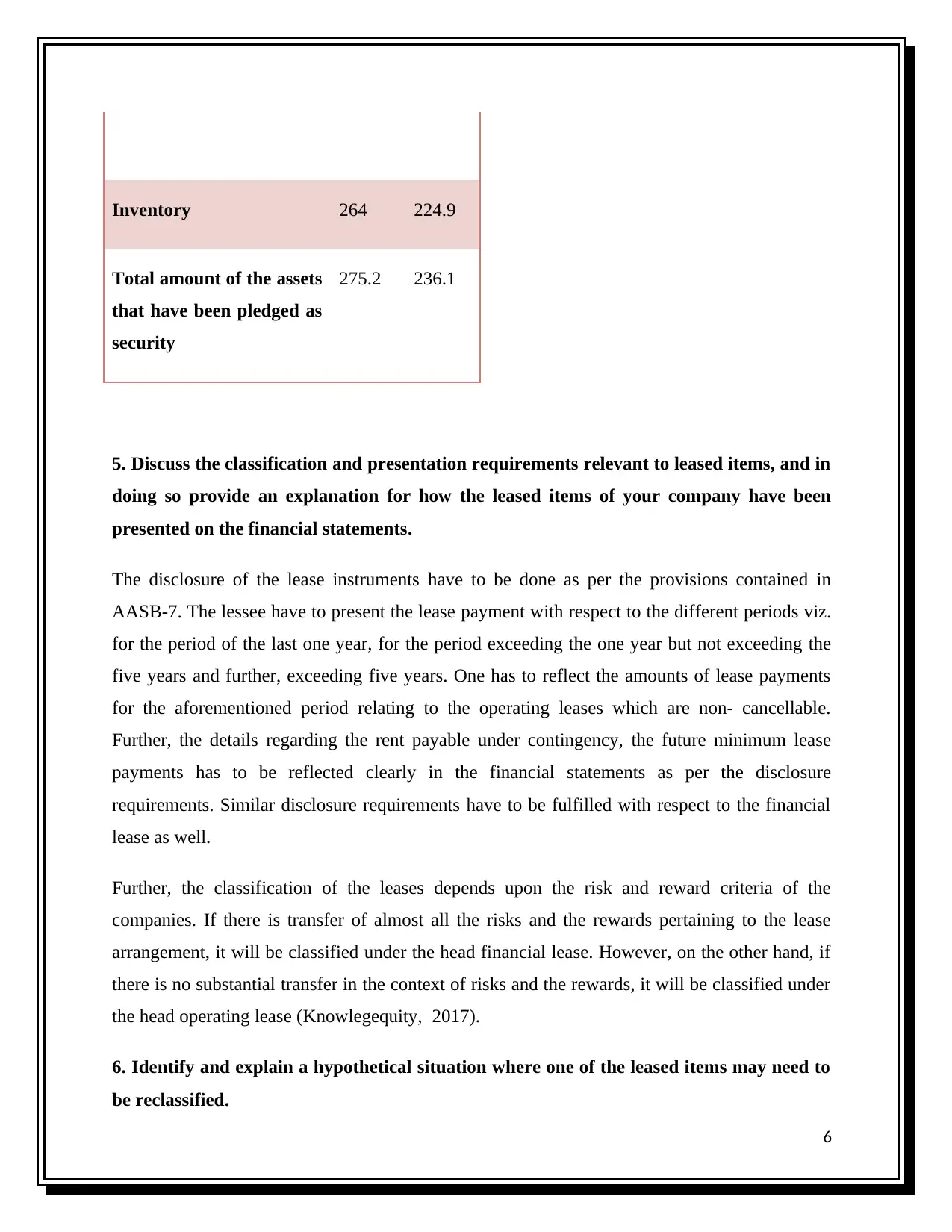
Inventory 264 224.9
Total amount of the assets
that have been pledged as
security
275.2 236.1
5. Discuss the classification and presentation requirements relevant to leased items, and in
doing so provide an explanation for how the leased items of your company have been
presented on the financial statements.
The disclosure of the lease instruments have to be done as per the provisions contained in
AASB-7. The lessee have to present the lease payment with respect to the different periods viz.
for the period of the last one year, for the period exceeding the one year but not exceeding the
five years and further, exceeding five years. One has to reflect the amounts of lease payments
for the aforementioned period relating to the operating leases which are non- cancellable.
Further, the details regarding the rent payable under contingency, the future minimum lease
payments has to be reflected clearly in the financial statements as per the disclosure
requirements. Similar disclosure requirements have to be fulfilled with respect to the financial
lease as well.
Further, the classification of the leases depends upon the risk and reward criteria of the
companies. If there is transfer of almost all the risks and the rewards pertaining to the lease
arrangement, it will be classified under the head financial lease. However, on the other hand, if
there is no substantial transfer in the context of risks and the rewards, it will be classified under
the head operating lease (Knowlegequity, 2017).
6. Identify and explain a hypothetical situation where one of the leased items may need to
be reclassified.
6
Total amount of the assets
that have been pledged as
security
275.2 236.1
5. Discuss the classification and presentation requirements relevant to leased items, and in
doing so provide an explanation for how the leased items of your company have been
presented on the financial statements.
The disclosure of the lease instruments have to be done as per the provisions contained in
AASB-7. The lessee have to present the lease payment with respect to the different periods viz.
for the period of the last one year, for the period exceeding the one year but not exceeding the
five years and further, exceeding five years. One has to reflect the amounts of lease payments
for the aforementioned period relating to the operating leases which are non- cancellable.
Further, the details regarding the rent payable under contingency, the future minimum lease
payments has to be reflected clearly in the financial statements as per the disclosure
requirements. Similar disclosure requirements have to be fulfilled with respect to the financial
lease as well.
Further, the classification of the leases depends upon the risk and reward criteria of the
companies. If there is transfer of almost all the risks and the rewards pertaining to the lease
arrangement, it will be classified under the head financial lease. However, on the other hand, if
there is no substantial transfer in the context of risks and the rewards, it will be classified under
the head operating lease (Knowlegequity, 2017).
6. Identify and explain a hypothetical situation where one of the leased items may need to
be reclassified.
6
⊘ This is a preview!⊘
Do you want full access?
Subscribe today to unlock all pages.

Trusted by 1+ million students worldwide
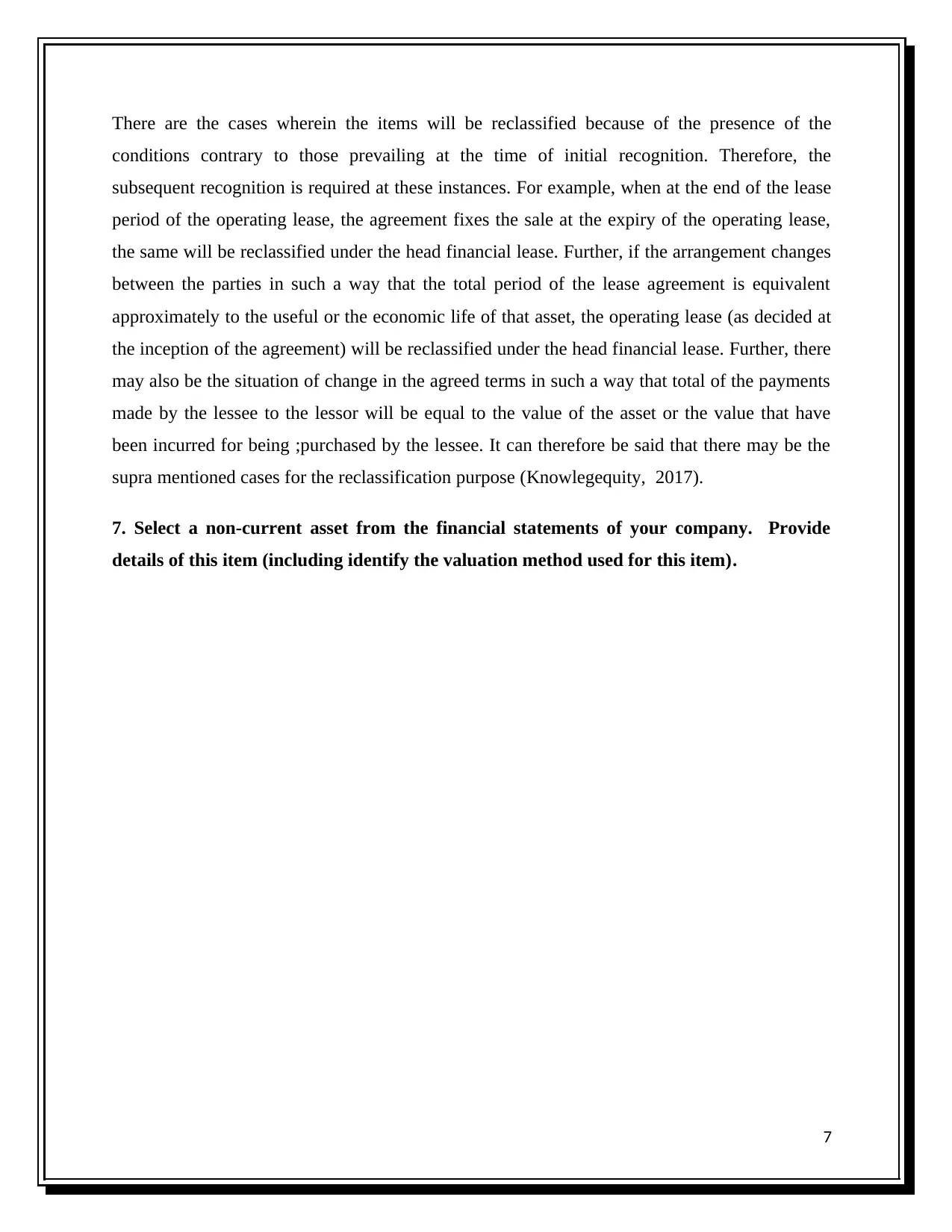
There are the cases wherein the items will be reclassified because of the presence of the
conditions contrary to those prevailing at the time of initial recognition. Therefore, the
subsequent recognition is required at these instances. For example, when at the end of the lease
period of the operating lease, the agreement fixes the sale at the expiry of the operating lease,
the same will be reclassified under the head financial lease. Further, if the arrangement changes
between the parties in such a way that the total period of the lease agreement is equivalent
approximately to the useful or the economic life of that asset, the operating lease (as decided at
the inception of the agreement) will be reclassified under the head financial lease. Further, there
may also be the situation of change in the agreed terms in such a way that total of the payments
made by the lessee to the lessor will be equal to the value of the asset or the value that have
been incurred for being ;purchased by the lessee. It can therefore be said that there may be the
supra mentioned cases for the reclassification purpose (Knowlegequity, 2017).
7. Select a non-current asset from the financial statements of your company. Provide
details of this item (including identify the valuation method used for this item).
7
conditions contrary to those prevailing at the time of initial recognition. Therefore, the
subsequent recognition is required at these instances. For example, when at the end of the lease
period of the operating lease, the agreement fixes the sale at the expiry of the operating lease,
the same will be reclassified under the head financial lease. Further, if the arrangement changes
between the parties in such a way that the total period of the lease agreement is equivalent
approximately to the useful or the economic life of that asset, the operating lease (as decided at
the inception of the agreement) will be reclassified under the head financial lease. Further, there
may also be the situation of change in the agreed terms in such a way that total of the payments
made by the lessee to the lessor will be equal to the value of the asset or the value that have
been incurred for being ;purchased by the lessee. It can therefore be said that there may be the
supra mentioned cases for the reclassification purpose (Knowlegequity, 2017).
7. Select a non-current asset from the financial statements of your company. Provide
details of this item (including identify the valuation method used for this item).
7
Paraphrase This Document
Need a fresh take? Get an instant paraphrase of this document with our AI Paraphraser
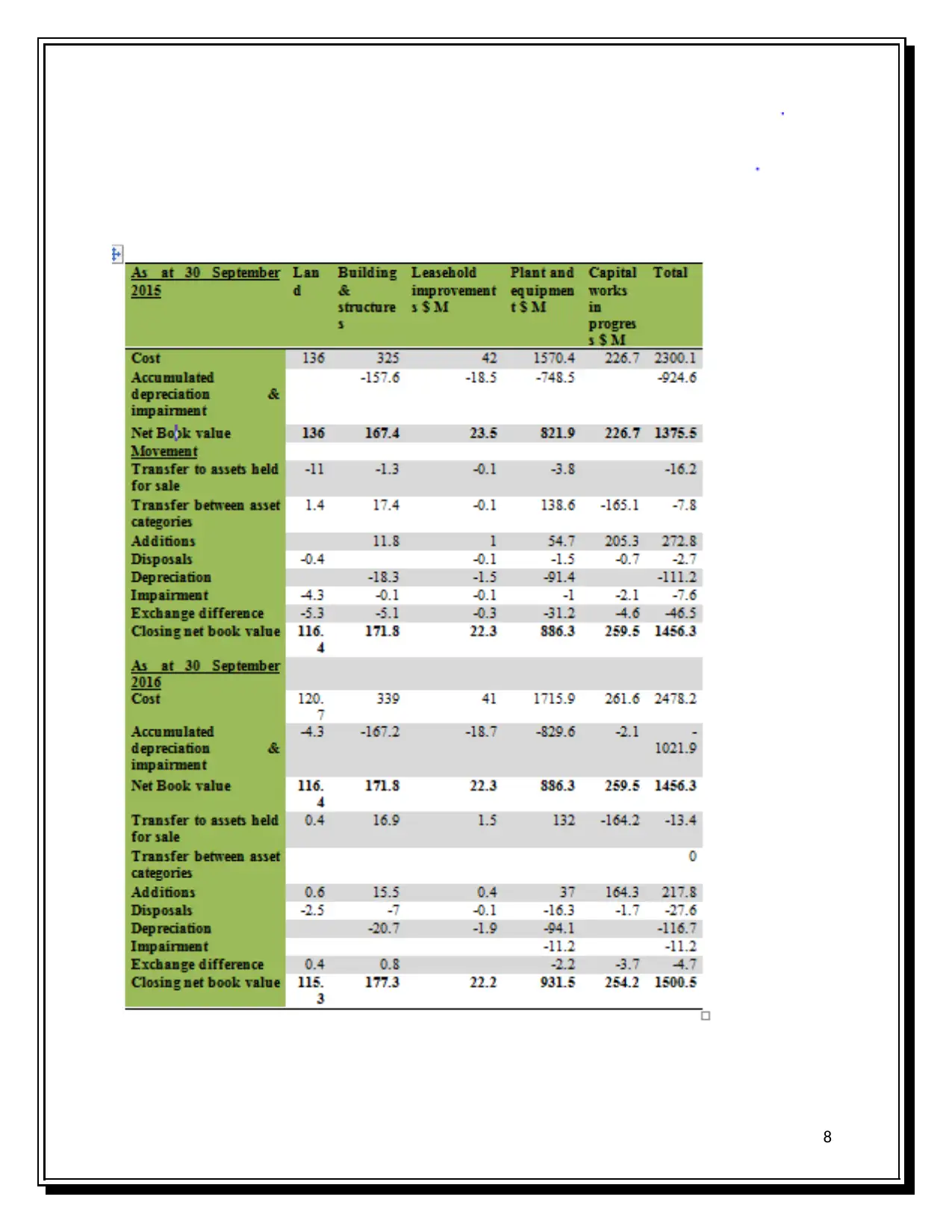
8
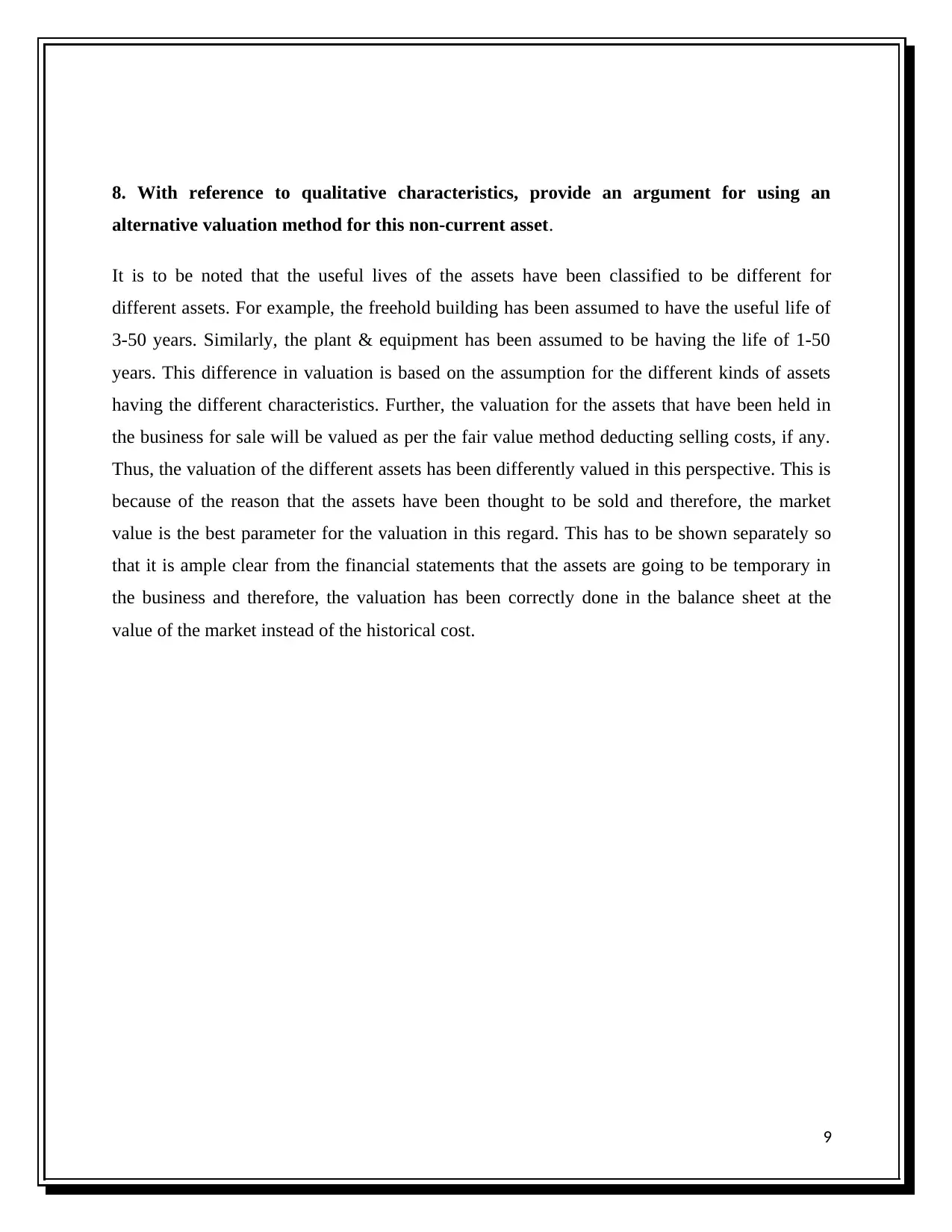
8. With reference to qualitative characteristics, provide an argument for using an
alternative valuation method for this non-current asset.
It is to be noted that the useful lives of the assets have been classified to be different for
different assets. For example, the freehold building has been assumed to have the useful life of
3-50 years. Similarly, the plant & equipment has been assumed to be having the life of 1-50
years. This difference in valuation is based on the assumption for the different kinds of assets
having the different characteristics. Further, the valuation for the assets that have been held in
the business for sale will be valued as per the fair value method deducting selling costs, if any.
Thus, the valuation of the different assets has been differently valued in this perspective. This is
because of the reason that the assets have been thought to be sold and therefore, the market
value is the best parameter for the valuation in this regard. This has to be shown separately so
that it is ample clear from the financial statements that the assets are going to be temporary in
the business and therefore, the valuation has been correctly done in the balance sheet at the
value of the market instead of the historical cost.
9
alternative valuation method for this non-current asset.
It is to be noted that the useful lives of the assets have been classified to be different for
different assets. For example, the freehold building has been assumed to have the useful life of
3-50 years. Similarly, the plant & equipment has been assumed to be having the life of 1-50
years. This difference in valuation is based on the assumption for the different kinds of assets
having the different characteristics. Further, the valuation for the assets that have been held in
the business for sale will be valued as per the fair value method deducting selling costs, if any.
Thus, the valuation of the different assets has been differently valued in this perspective. This is
because of the reason that the assets have been thought to be sold and therefore, the market
value is the best parameter for the valuation in this regard. This has to be shown separately so
that it is ample clear from the financial statements that the assets are going to be temporary in
the business and therefore, the valuation has been correctly done in the balance sheet at the
value of the market instead of the historical cost.
9
⊘ This is a preview!⊘
Do you want full access?
Subscribe today to unlock all pages.

Trusted by 1+ million students worldwide
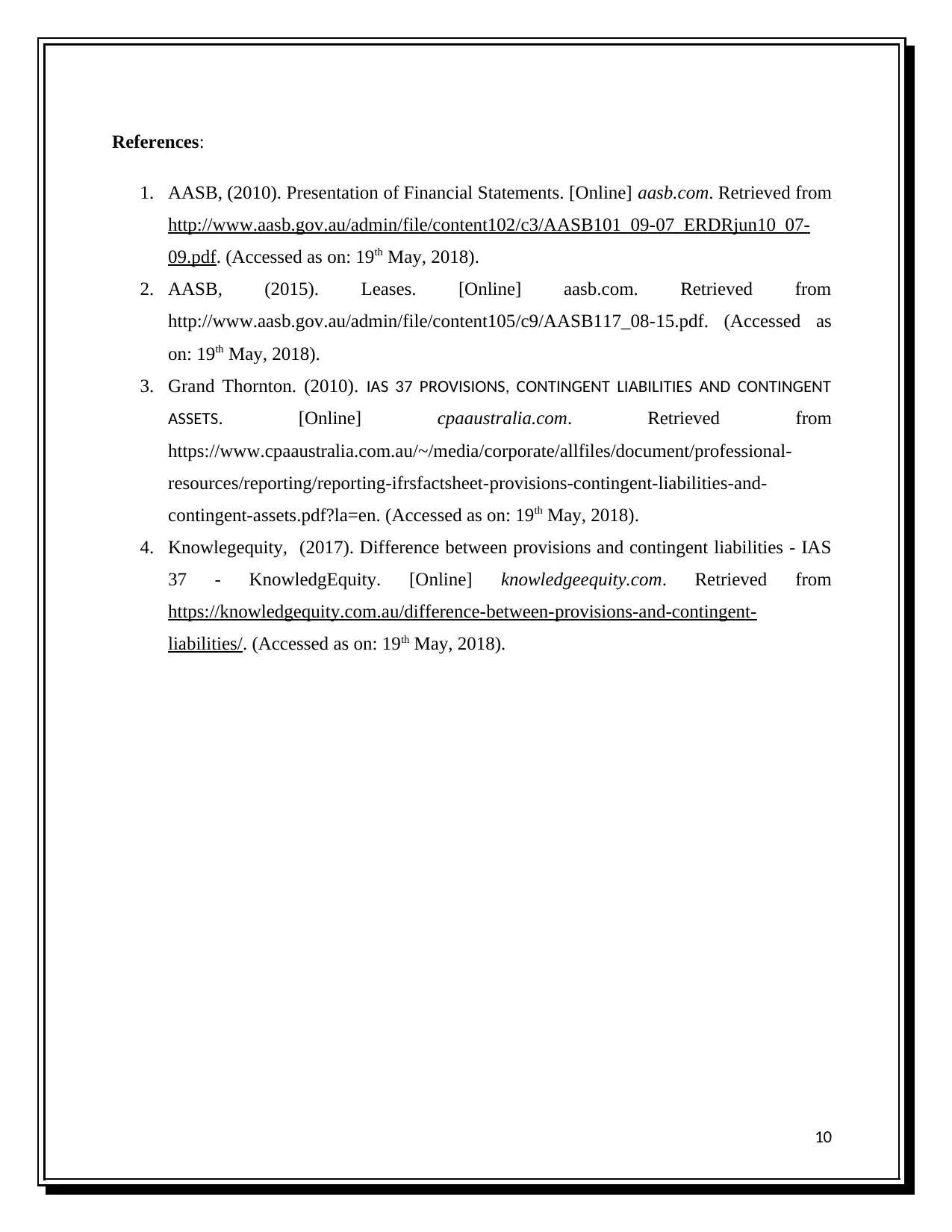
References:
1. AASB, (2010). Presentation of Financial Statements. [Online] aasb.com. Retrieved from
http://www.aasb.gov.au/admin/file/content102/c3/AASB101_09-07_ERDRjun10_07-
09.pdf. (Accessed as on: 19th May, 2018).
2. AASB, (2015). Leases. [Online] aasb.com. Retrieved from
http://www.aasb.gov.au/admin/file/content105/c9/AASB117_08-15.pdf. (Accessed as
on: 19th May, 2018).
3. Grand Thornton. (2010). IAS 37 PROVISIONS, CONTINGENT LIABILITIES AND CONTINGENT
ASSETS. [Online] cpaaustralia.com. Retrieved from
https://www.cpaaustralia.com.au/~/media/corporate/allfiles/document/professional-
resources/reporting/reporting-ifrsfactsheet-provisions-contingent-liabilities-and-
contingent-assets.pdf?la=en. (Accessed as on: 19th May, 2018).
4. Knowlegequity, (2017). Difference between provisions and contingent liabilities - IAS
37 - KnowledgEquity. [Online] knowledgeequity.com. Retrieved from
https://knowledgequity.com.au/difference-between-provisions-and-contingent-
liabilities/. (Accessed as on: 19th May, 2018).
10
1. AASB, (2010). Presentation of Financial Statements. [Online] aasb.com. Retrieved from
http://www.aasb.gov.au/admin/file/content102/c3/AASB101_09-07_ERDRjun10_07-
09.pdf. (Accessed as on: 19th May, 2018).
2. AASB, (2015). Leases. [Online] aasb.com. Retrieved from
http://www.aasb.gov.au/admin/file/content105/c9/AASB117_08-15.pdf. (Accessed as
on: 19th May, 2018).
3. Grand Thornton. (2010). IAS 37 PROVISIONS, CONTINGENT LIABILITIES AND CONTINGENT
ASSETS. [Online] cpaaustralia.com. Retrieved from
https://www.cpaaustralia.com.au/~/media/corporate/allfiles/document/professional-
resources/reporting/reporting-ifrsfactsheet-provisions-contingent-liabilities-and-
contingent-assets.pdf?la=en. (Accessed as on: 19th May, 2018).
4. Knowlegequity, (2017). Difference between provisions and contingent liabilities - IAS
37 - KnowledgEquity. [Online] knowledgeequity.com. Retrieved from
https://knowledgequity.com.au/difference-between-provisions-and-contingent-
liabilities/. (Accessed as on: 19th May, 2018).
10
1 out of 10
Related Documents
Your All-in-One AI-Powered Toolkit for Academic Success.
+13062052269
info@desklib.com
Available 24*7 on WhatsApp / Email
![[object Object]](/_next/static/media/star-bottom.7253800d.svg)
Unlock your academic potential
Copyright © 2020–2025 A2Z Services. All Rights Reserved. Developed and managed by ZUCOL.




